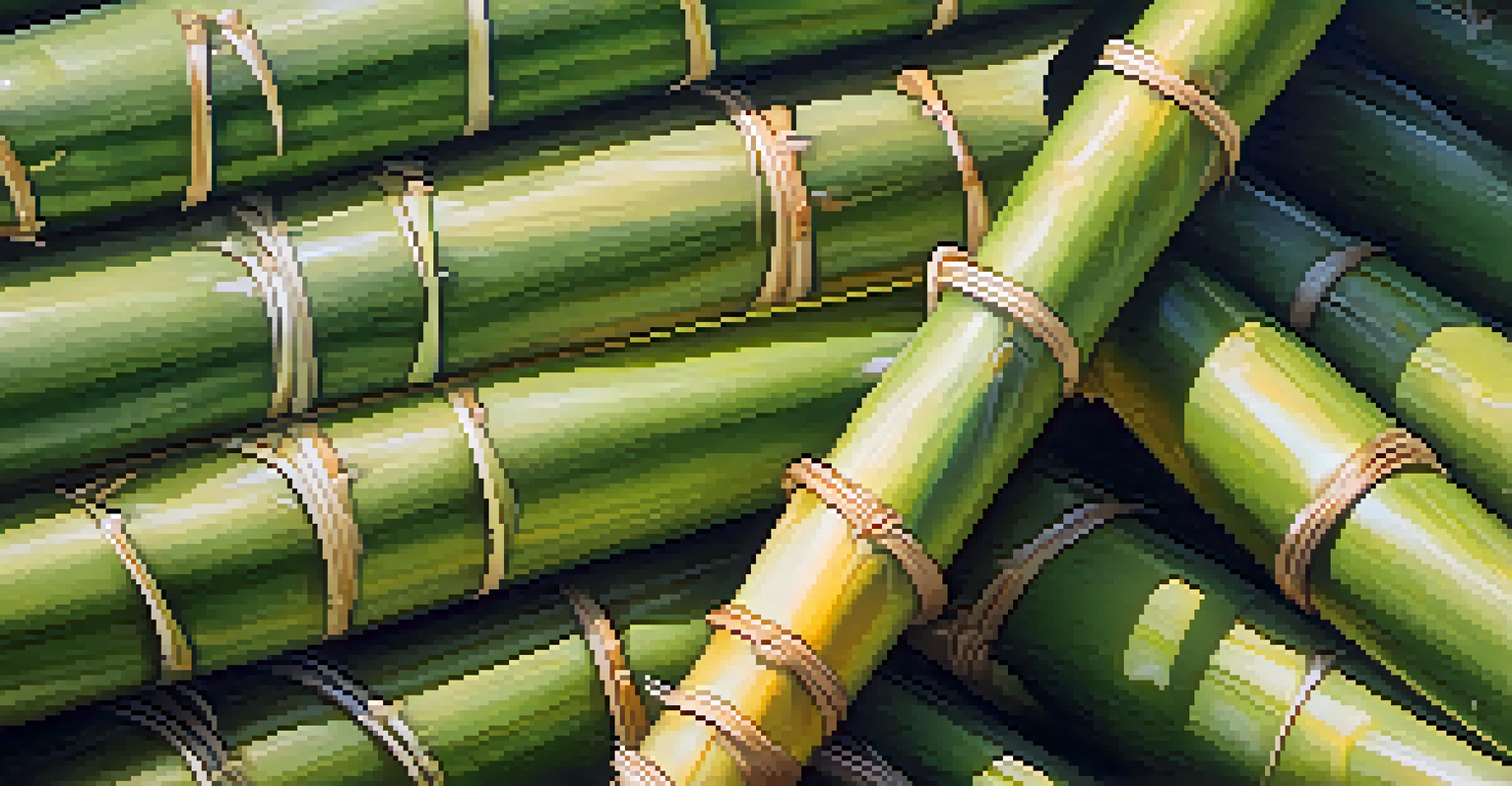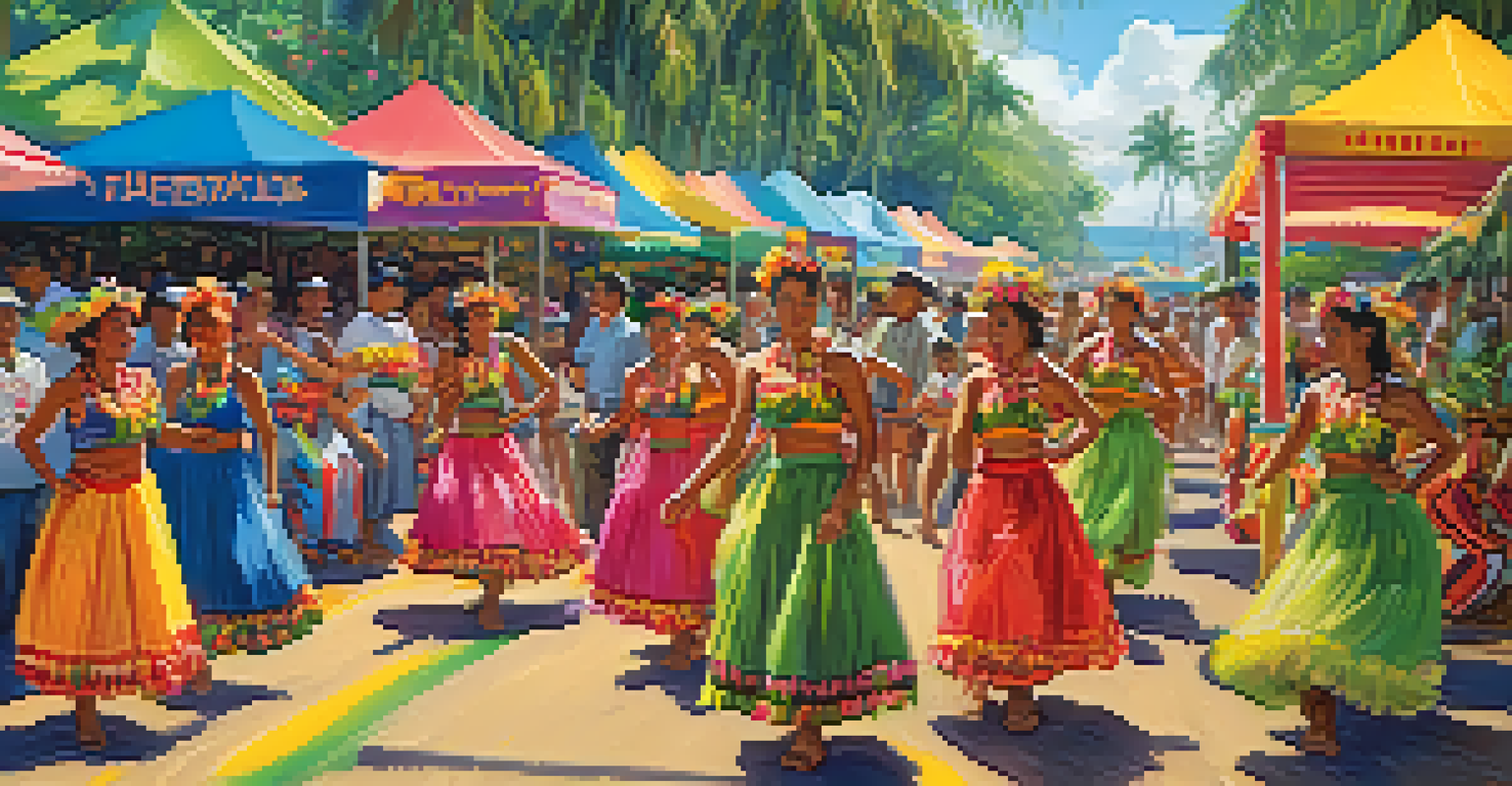The Origins of Sugar Plantations in Hawaii: A Historical Overview

Early Beginnings: Sugar Cultivation in Hawaii
The story of sugar plantations in Hawaii begins in the early 19th century when the islands were first introduced to sugarcane. Initially brought by Polynesian settlers, this tropical grass thrived in Hawaii's warm climate and rich soil. However, it wasn't until the arrival of European and American settlers that sugarcane became a significant cash crop.
Hawaii is a place where the past and present coexist, and the legacy of sugar is a crucial part of that story.
In 1835, the first commercial sugar plantation was established in Kōloa on Kauai. This marked the beginning of a booming industry that would transform Hawaii’s economy and landscape. As demand for sugar surged in the United States and beyond, more plantations began to spring up across the islands.
The allure of sugar was not just in its sweetness but also in its profitability. By the mid-1800s, sugar had become Hawaii’s primary export, leading to the establishment of a robust agricultural economy that would reshape the islands for generations.
The Role of Immigrant Labor in Sugar Plantations
As sugar plantations grew, so did the need for labor. Initially, plantations relied on local Hawaiian workers, but the demand quickly outpaced the available workforce. To meet this need, plantation owners began to recruit immigrant labor from various countries, starting with Chinese workers in the 1850s.

Over the years, workers from Japan, Portugal, Korea, and the Philippines followed, creating a diverse labor force. These immigrants not only provided the essential manpower but also contributed to the cultural tapestry of Hawaii. Their traditions, languages, and cuisines blended into the islands' rich heritage.
Sugar Transformed Hawaii's Economy
The sugar industry became Hawaii's primary export by the mid-1800s, reshaping its economy and landscape.
However, the working conditions on these plantations were often harsh, with long hours and low pay. Despite these challenges, many immigrant workers forged a path toward a better life, influencing the labor movement in Hawaii and advocating for their rights.
Economic Impact: Sugar as Hawaii's Cash Crop
The sugar industry quickly became the backbone of Hawaii's economy, attracting investment and creating jobs. By the late 19th century, sugar was Hawaii's most significant export, accounting for over 90% of the islands' exports. This economic boom led to the development of infrastructure, including roads, schools, and hospitals.
The history of sugar in Hawaii is not just about economics; it's about the people and cultures that shaped the islands.
Plantation owners amassed considerable wealth, which they often reinvested in local businesses and industries. The ripple effect of this wealth creation transformed Hawaii into a vital player in the global sugar market. However, it also led to economic disparities and tensions between the wealthy plantation owners and local communities.
As the U.S. economy grew, so did Hawaii’s importance as a strategic location for sugar production. The annexation of Hawaii in 1898 further solidified the sugar industry's dominance, as it became integral to the U.S. agricultural system.
Political Changes: The Annexation of Hawaii
The relationship between sugar plantations and politics in Hawaii is complex and intertwined. In the late 1800s, the powerful sugar planters sought greater control over their industry and land, leading to increased political influence. This culminated in the overthrow of Queen Liliʻuokalani in 1893, an event driven in part by the economic interests of the sugar elite.
The subsequent annexation of Hawaii by the United States in 1898 further entrenched the sugar industry's power. As Hawaii became a U.S. territory, sugar planters gained access to new markets and protections. This shift not only changed the political landscape but also had lasting effects on the cultural identity of the islands.
Diverse Labor Shaped Cultural Identity
Immigrant labor from various countries contributed not only to the sugar industry but also to Hawaii's rich cultural tapestry.
The annexation was controversial and sparked resistance among native Hawaiians. This tension continues to resonate today, as discussions about sovereignty and cultural heritage remain prominent in Hawaii's narrative.
Technological Advances and Sugar Production
The sugar industry in Hawaii was not just defined by its labor force but also by technological advancements. The introduction of steam-powered machinery in the late 19th century revolutionized sugar production, increasing efficiency and output. These innovations allowed plantations to process sugarcane more quickly and on a larger scale.
With advancements like the centrifugal machine and improved irrigation techniques, sugar production surged. This technological growth coincided with the establishment of the Hawaiian Sugar Planters' Association in 1895, which focused on research and development to boost productivity.
However, this shift also led to environmental concerns, as extensive land use for sugarcane impacted Hawaii's ecosystems. The balance between economic growth and environmental preservation became an ongoing challenge for the state.
Decline of the Sugar Industry in Hawaii
Despite its early success, the sugar industry in Hawaii began to decline in the latter half of the 20th century. Factors such as competition from cheaper sugar producers in countries like Brazil and the Dominican Republic undermined Hawaii's sugar market. Additionally, rising labor costs and environmental regulations posed further challenges.
By the 1990s, many plantations started shutting down, marking a significant shift in Hawaii's agricultural landscape. The last sugar plantation, Hawaiian Commercial & Sugar Company, closed its doors in 2016, ending an era that had lasted over 175 years.
Decline Prompted Agricultural Reevaluation
The decline of sugar plantations led to a shift towards diversified agriculture and sustainable practices in Hawaii.
The decline of sugar plantations has led to a reevaluation of land use in Hawaii, with a push towards diversified agriculture and sustainable practices. This transition reflects a broader movement away from monoculture farming, allowing for a richer variety of crops and economic opportunities.
Cultural Legacy of Sugar Plantations in Hawaii
The legacy of sugar plantations in Hawaii extends beyond economics; it has profoundly influenced the islands' culture and society. The blending of diverse cultures brought by immigrant workers has enriched Hawaii's identity, contributing to its unique language, food, and traditions.
Festivals celebrating sugarcane and cultural heritage highlight this rich tapestry. Events like the Makaweli Sugar Festival showcase local music, dance, and culinary traditions, serving as a reminder of the islands' agricultural roots.

Today, as Hawaii grapples with its past, the sugar industry's history serves as a lens through which to explore issues of identity, sovereignty, and sustainability. This legacy continues to shape discussions about the future of agriculture and cultural preservation in the islands.